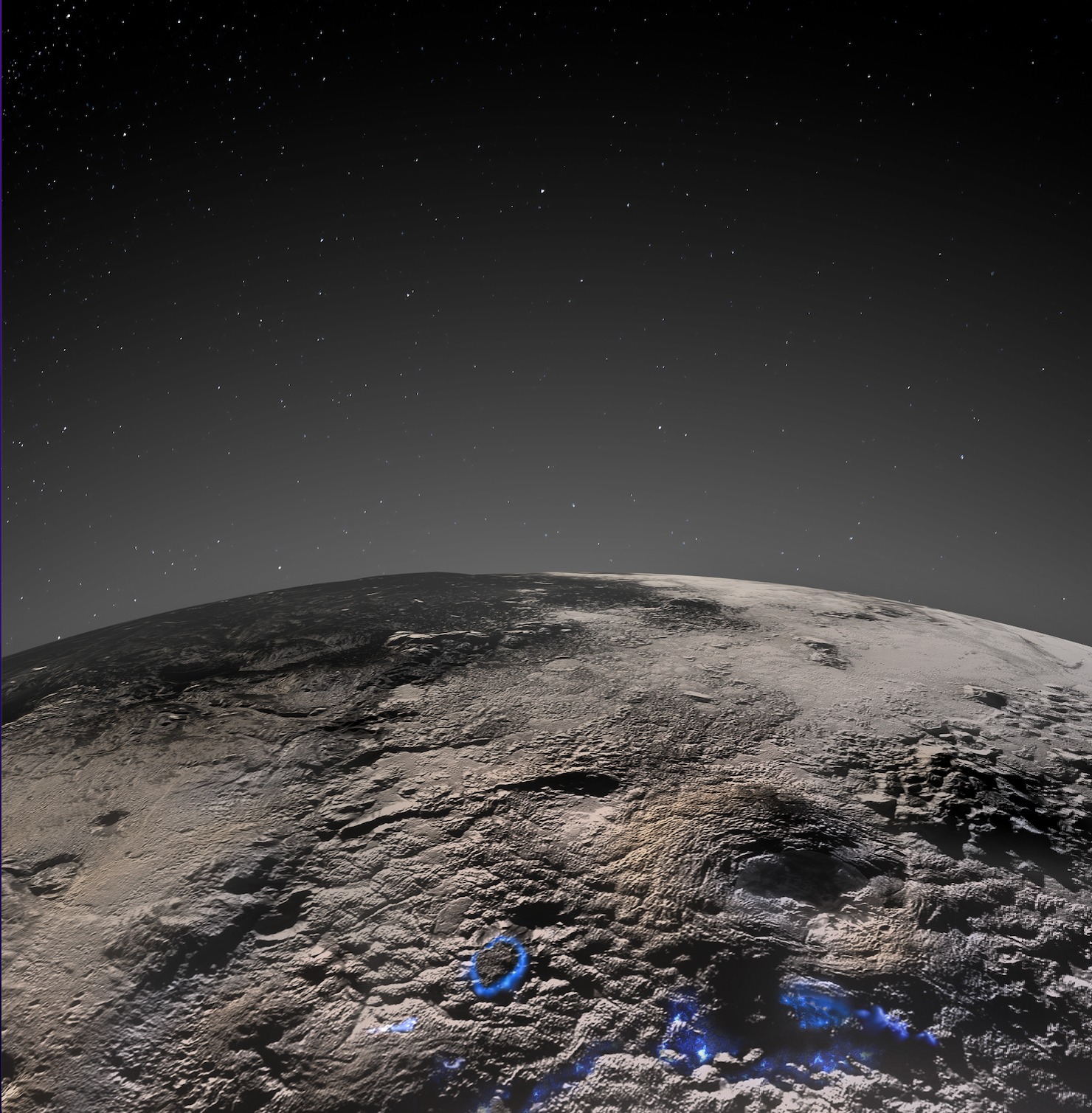
And some of these must have erupted relatively recently.
It’s been about seven years since the New Horizons spacecraft skimmed past dwarf planet Pluto. It provided breathtaking views and beautiful images that revealed what the surface of this distant and mysterious world, located in the outer reaches of our solar system, looks like. Researchers are still looking into the data New Horizons collected back then. And that once again leads to an exciting new discovery.
ice volcanoes
Photos of Pluto taken by New Horizons reveal an area of the dwarf planet dominated by ice volcanoes. Ice volcanoes are somewhat similar to terrestrial volcanoes, except they spew not molten rock, but a molten mix of frozen liquids such as ammonia and water. The researchers found the area southwest of Sputnik Planitia; the well-known heart-shaped region on Pluto.

The icy volcanic field on Pluto. Pluto’s surface and atmospheric nebulae are shown here in shades of gray. An artistic interpretation of how volcanic processes worked in the past are colored blue here. Image: NASA/Johns Hopkins University Applied Physics Laboratory/Southwest Research Institute
The researchers examined the geomorphology and composition of the area and found that the material consists mainly of water ice. In addition, they discovered many volcanoes in the region, ranging from a few kilometers to up to seven kilometers (!) high. An ice volcano known as Wright Mons has even been found to rival the Hawaiian Mauna Loa volcano in volume, one of the largest volcanoes on Earth. 30 to 100 kilometers wide specimens have also been spotted. In addition, some volcanoes appear to have fused into larger structures.
Unique
The researchers argue that such a volcanic region, characterized by large domes and elevations, cannot be seen anywhere else in the solar system. “The specific structures we’ve studied are unique to Pluto so far,” said researcher Kelsi Singer. The researcher suspects that material from below the surface of this distant icy planet pushed up, creating the “bumpy” region. “Large amounts of material were brought back to Pluto’s surface not through erosion or other geological processes, but probably through ice volcanism,” Singer said.
Recent eruptions
Notably, unlike some other parts of Pluto’s surface, the area has little to no craters. According to the researchers, this indicates that the area is geologically young; some of the ice volcanoes discovered must have erupted relatively recently. At the same time, this means that Pluto’s internal structure is warmer than previously thought.
Unexpected
The findings show again how interesting Pluto really is. Images obtained by the spacecraft in 2015 already revealed several geological features, including mountains, valleys, plains and glaciers. These were especially intriguing, because the frigid temperatures on Pluto were expected to create a frozen and geologically inactive world. Nothing turned out to be less true. And now, seven years after New Horizons visit to Pluto, researchers are making new discoveries on that distant and still mysterious dwarf planet. “One of the benefits of exploring new places in the solar system is that we find things we didn’t expect,” Singer says. “These gigantic, strange-looking ice volcanoes observed by New Horizons are a great example of how we are expanding our knowledge of volcanic processes and geological activity on icy worlds.”
Milestone
According to the researchers, the new study is a milestone. “It shows once again how much geological personality Pluto has,” said New Horizons lead researcher Alan Stern. “It has been incredibly active over a long period of time. And all for such a small planet. Even years after the flyby these new results show that there is much more to learn about the wonders of Pluto than we ever imagined.”
Currently, New Horizons is still flying through the Kuiper Belt. From the belt, the probe makes unique observations. But it doesn’t stop there – if it’s up to NASA. For example, the search is currently underway for another Kuiper Belt object that New Horizons can fly past to give us more insight into the beautiful worlds we find at the edge of our solar system.
Source material:
†SwRI-led study points to multiple eruptions forming Pluto’s giant ice volcanos†
Image at the top of this article: NASA/Johns Hopkins University Applied Physics Laboratory/Southwest Research Institute